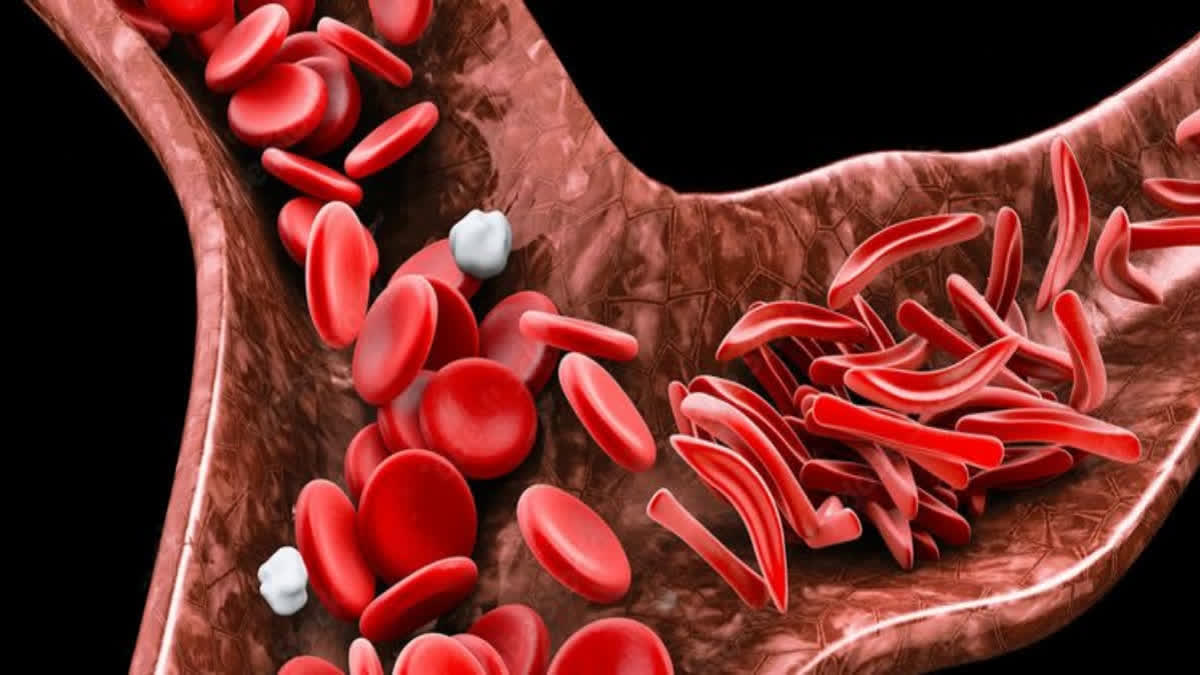New Delhi: Deaths due to sickle cell disease is 11 times higher than those indicated from mortality data sources alone, researchers have found analysing global health data from 2000 to 2021, publishing their findings in The Lancet Haematology journal. Through epidemiological models, they found that in 2021, the "total mortality burden" of sickle cell disease was 373,000 deaths, compared to 34,600 sickle-cell-only deaths, or "cause-specific deaths", with the increase being especially pronounced in South Asia and sub-Saharan Africa, where the fatality figures were 67 times higher and nine times higher, respectively.
The research, which combined prevalence and birth incidence data with mortality data in these models, is part of the Global Burden of Disease 2021 study coordinated by the Institute for Health Metrics and Evaluation (IHME) at the University of Washington's School of Medicine, US. Sickle-cell disease, or sickle-cell anaemia, is a congenital form of anaemia acquired during foetal development, characterised by the presence of sickle cells, or unusual crescent-shaped red blood cells having an abnormal form of haemoglobin.
Along with being underdiagnosed, sickle cell disease also increases risk of infection and of death from conditions like stroke, heart problems, kidney problems, and pregnancy complications and thus, could lead to the disease not being listed as a "cause of death", as the extent of its contribution to death is not known fully to the doctor.
Also read: World Blood Donor Day 2023: Healthy People to Donate, Ensuring Safe Transfusions Across Globe
"Our research reveals the stark reality that sickle cell disease is far deadlier than its textbook description," said senior author Nicholas Kassebaum, Adjunct Associate Professor at IHME. "The number of babies born with sickle cell disease is rising, which means a very difficult early childhood. Patients are more susceptible to infections and other severe conditions, so early detection is key for treatment," said Kassebaum. The study found that in 2021, half a million babies were born with sickle cell disease, more than three-quarters of which were in sub-Saharan Africa.
Sickle cell disease was found to be the 12th leading cause of death globally for children under the age of 5 years, under the total mortality burden analysis. However, in Portugal, Jamaica, Libya, Oman, and San Marino, sickle cell disease was among the top three causes of death, under the same analysis.
Not using mortality data alone, the researchers said they used a mathematical algorithm that also took inputs from birth incidence, survival over time, and prevalence. "By making use of all available data, we were able to strengthen our understanding of the true burden of sickle cell disease and better contextualise it alongside other leading causes of death.
"For example, in 2021, in kids under 5 years in sub-Saharan Africa, total sickle cell disease deaths exceeded those from malnutrition, measles, or syphilis," said Azalea Thomson, first author of the study and IHME researcher. Universal newborn screening, case monitoring through public registries, and early intervention treatment could alleviate suffering for some 8 million people living with sickle cell disease, the researchers said suggesting measures to address the largely underrecognized burden of the disease. (PTI)



